Introduction
- Hook: Highlight the importance of plant protection in maintaining healthy and thriving gardens.
- Significance: Emphasize the challenges gardeners face, such as pests, diseases, and environmental stressors.
- Overview: Provide a brief overview of the upcoming expert strategies for safeguarding plants.
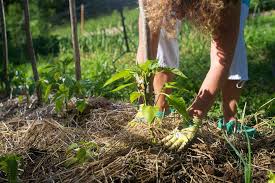
Strategy 1: Choose Resilient Plant Varieties
- Explanation: Discuss the importance of selecting plant varieties that are naturally resistant to common pests and diseases.
- Recommendations: Provide examples of resilient plant species and cultivars suitable for different growing conditions.
- Benefits: Highlight the advantages of starting with strong, resilient plants for long-term garden success.
Alright, let’s start with the basics – picking plants that can hold their own against whatever nature throws their way. It’s like choosing the superheroes of the plant world. Here’s the lowdown:
Explanation: First off, you want plants that are tough cookies – ones that can withstand pests, diseases, and whatever else comes their way. Look for varieties that have built-in defenses, like natural chemicals that repel insects or strong disease resistance.
Recommendations: So, which plants make the cut? Well, you’ve got options! Think about plants like marigolds, lavender, or even certain types of tomatoes. These guys are like the Avengers of the garden – strong, resilient, and ready to take on anything.
Benefits: By starting with resilient plants, you’re setting yourself up for success. These plants are less likely to get knocked down by pests or diseases, which means less work for you in the long run. Plus, they’ll reward you with beautiful blooms and bountiful harvests.
So, when you’re planning your garden, keep an eye out for those tough-as-nails plant varieties. They’re like the secret weapon in your gardening arsenal, helping you create a thriving and resilient garden that can stand up to anything!
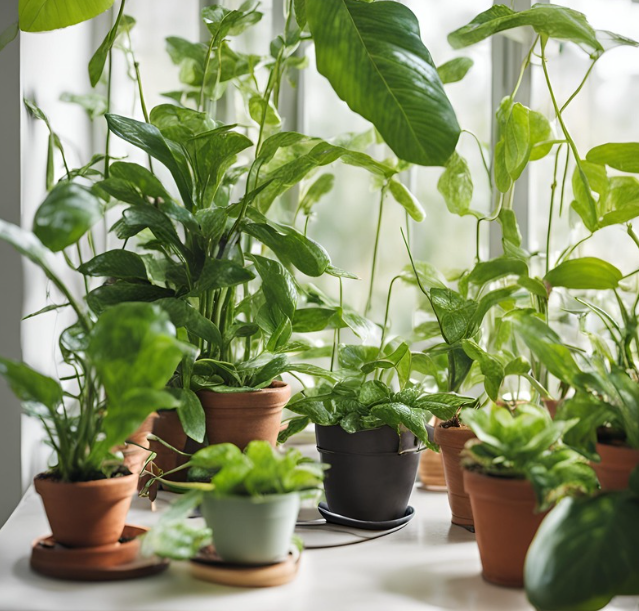
Strategy 2: Implement Physical Barriers
- Fencing: Discuss the effectiveness of installing fences or barriers to protect plants from larger pests like deer or rabbits.
- Netting: Explain how fine mesh netting can prevent birds, insects, and other small pests from accessing vulnerable plants.
- Pros and Cons: Evaluate the benefits and limitations of different physical barrier methods.
Alright, let’s talk about putting up some barriers – not to keep people out, but to keep pests away from your precious plants. It’s like giving your garden its own little fortress. Here’s how you can do it:
Fencing: Imagine a sturdy fence standing guard around your garden, protecting your plants from any unwanted visitors. It might sound like a big project, but trust me, it’s worth it. You’ll want to go for a fence that’s tall enough to keep out deer and rabbits, with a mesh size small enough to keep out smaller pests like rodents.
Netting: If you’re not ready to commit to a full-on fence, netting can be a great alternative. Picture a fine mesh net draped over your plants, creating an invisible shield that pests just can’t penetrate. It’s like putting your plants in their own little bubble of protection.
Pros and Cons: Now, let’s weigh up the options. Fences are solid and reliable, but they can be a bit of an eyesore if you’re not careful. On the other hand, netting is lightweight and discreet, but it might not offer as much protection against determined pests.
So, whether you opt for a fortress-like fence or a subtle netting barrier, implementing physical barriers around your plants is a surefire way to keep those pesky pests at bay.
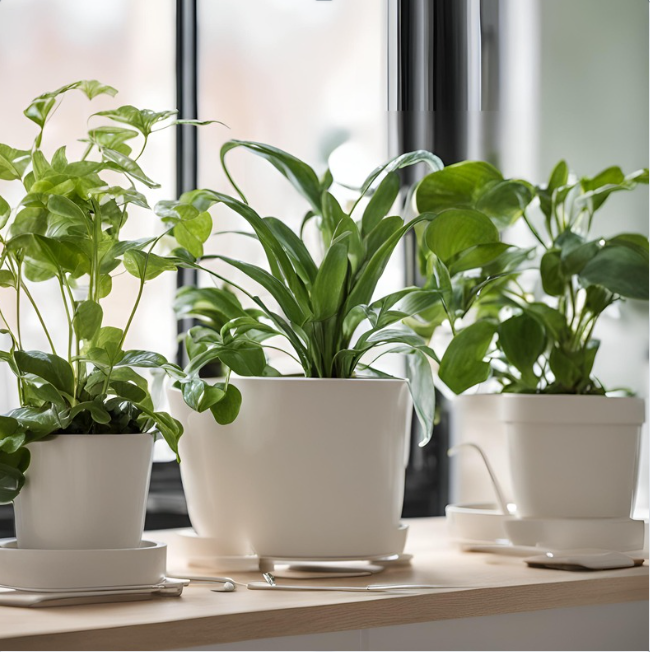
Strategy 3: Use Natural Predators
- Beneficial Insects: Discuss the role of beneficial insects like ladybugs and praying mantises in controlling pest populations.
- Birds and Wildlife: Explore how attracting birds and other wildlife to the garden can help manage pests organically.
- Habitat Enhancement: Provide tips for creating habitats that support natural predators and beneficial wildlife.
Alright, let’s talk about bringing in the cavalry – but in this case, it’s the tiny, beneficial critters that can help keep pests in check. It’s like having your own personal pest control squad right in your garden. Here’s how you can recruit them:
Beneficial Insects: Imagine ladybugs patrolling your plants, gobbling up aphids like they’re candy. These little heroes, along with other beneficial insects like lacewings and hoverflies, are nature’s pest control experts. You can attract them to your garden by planting flowers they love, like daisies and yarrow.
Birds and Wildlife: Now, let’s talk about the bigger players in the pest control game – birds and other wildlife. Birds like robins and sparrows love to snack on garden pests, while creatures like toads and frogs feast on slugs and snails. You can encourage these natural predators by providing food, water, and shelter in your garden.
Habitat Enhancement: Finally, let’s talk about creating the perfect environment for these natural predators to thrive. You can do this by adding features like birdhouses, bat boxes, and insect hotels to your garden. These structures provide shelter and nesting sites, making your garden even more inviting to beneficial wildlife.
By inviting natural predators into your garden, you’re not only keeping pests in check but also fostering a healthy and balanced ecosystem. It’s like having a team of superheroes on standby, ready to defend your plants against any pesky invaders!
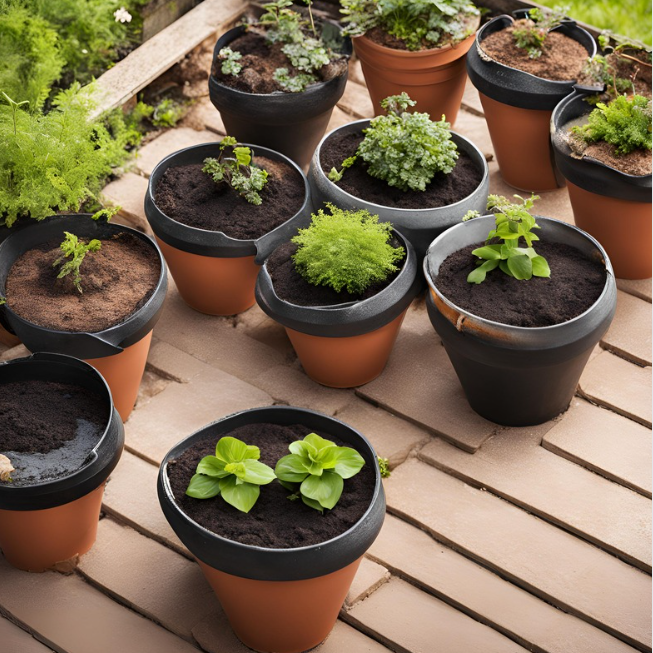
Strategy 4: Practice Proper Watering and Feeding
- Watering Guidelines: Discuss the importance of watering plants deeply and consistently to promote healthy root development.
- Fertilization: Provide recommendations for using organic fertilizers to nourish plants without overstimulating growth.
- Avoiding Overwatering: Highlight the risks of overwatering and the importance of allowing soil to dry out between waterings.
Alright, let’s talk about giving your plants the TLC they need to stay strong and resilient. It’s like serving up a nutritious meal and a refreshing drink to keep them happy and healthy. Here’s what you need to know:
Watering Guidelines: Picture this: your plants are feeling a bit parched, so it’s time to break out the watering can. But hold on – before you start dousing them, remember that different plants have different watering needs. Some like it moist, while others prefer to dry out between waterings. So, get to know your plants and water accordingly.
Fertilization: Now, let’s talk about feeding your plants. Just like you need your daily vitamins, plants need their nutrients to thrive. You can give them a boost with a dose of fertilizer, but be careful not to overdo it. Too much fertilizer can do more harm than good, so follow the instructions and use it sparingly.
Avoiding Overwatering: Ah, the dreaded overwatering – it’s like drowning your plants with kindness. Remember, soggy soil can lead to root rot and other problems, so always check the soil moisture before you water. And if in doubt, it’s better to underwater than overwater – your plants will thank you for it.
By mastering the art of proper watering and feeding, you’ll keep your plants happy and healthy, ready to fend off pests and diseases like champs. It’s like giving them the VIP treatment they deserve, ensuring they thrive and bloom to their fullest potential!
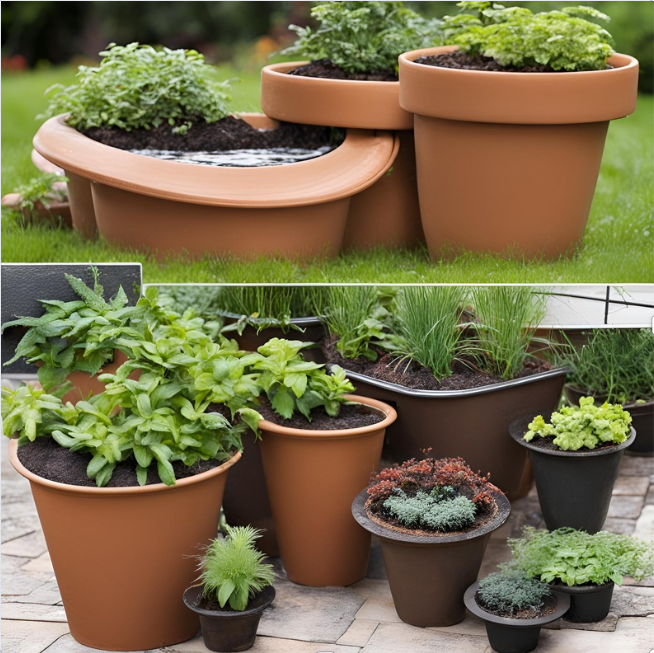
Strategy 5: Monitor and Identify Pests and Diseases
- Early Detection: Emphasize the importance of regular monitoring for signs of pest infestation or disease symptoms.
- Identification: Provide guidance on how to accurately identify common pests and diseases affecting garden plants.
- Integrated Pest Management (IPM): Introduce the concept of IPM and its role in effectively managing pest and disease issues.
Alright, it’s time to put on your detective hat and keep an eye out for any troublemakers lurking in your garden. Think of it like playing a game of hide-and-seek, but with pests and diseases. Here’s how to do it:
Early Detection: Imagine spotting a few tiny bugs on your plants – it might not seem like a big deal at first, but catching them early can make all the difference. Regularly inspect your plants for any signs of pest infestation or disease symptoms. The sooner you catch them, the easier they are to control.
Identification: Now, let’s talk about identifying your garden foes. Not sure what’s causing those holes in your leaves or that strange discoloration on your stems? Take some time to do a little research and figure out what you’re dealing with. There are plenty of resources online and in gardening books to help you identify common pests and diseases.
Integrated Pest Management (IPM): Finally, let’s talk about putting your detective skills to good use with integrated pest management. Instead of reaching for the chemical sprays right away, try using a combination of cultural, mechanical, and biological control methods to manage pests and diseases in your garden. It’s like having a whole toolbox of strategies at your disposal.
By staying vigilant and keeping an eye out for any signs of trouble, you’ll be able to nip pest and disease problems in the bud before they have a chance to take hold. It’s like being the Sherlock Holmes of your garden, solving mysteries and keeping your plants safe and sound!

Strategy 6: Use Organic Pest Control Methods
- Companion Planting: Discuss the benefits of planting companion crops to deter pests and attract beneficial insects.
- Natural Sprays and Solutions: Provide recipes for homemade pest control sprays using ingredients like garlic, neem oil, or soap.
- Biological Controls: Explore the use of biological controls such as nematodes or microbial insecticides to target specific pests.
Alright, let’s talk about keeping those pesky pests in check without resorting to harsh chemicals. It’s like fighting fire with a garden-friendly approach. Here’s how you can do it:
Companion Planting: Imagine planting a few extra herbs and flowers around your garden – not only do they look pretty, but they also help keep pests away. Plants like basil, marigolds, and lavender can act as natural repellents for common garden pests. It’s like inviting some friendly bodyguards to protect your plants.
Natural Sprays and Solutions: Now, let’s whip up some homemade pest control sprays using ingredients you probably already have in your kitchen. Things like garlic, hot peppers, and soap can be mixed together to create a potent solution that repels insects without harming your plants. It’s like whipping up a batch of homemade bug repellent for your garden.
Biological Controls: Finally, let’s talk about enlisting some tiny allies to do the dirty work for you. Nematodes, for example, are microscopic worms that can help control soil-dwelling pests like grubs and larvae. And microbial insecticides contain beneficial bacteria that target specific pests while leaving beneficial insects unharmed. It’s like sending in the reinforcements to take out the bad guys.
By using organic pest control methods, you can effectively manage pests in your garden while minimizing harm to the environment and beneficial insects. It’s like creating a win-win situation for you and your garden – pests are kept in check, and your plants can thrive naturally!
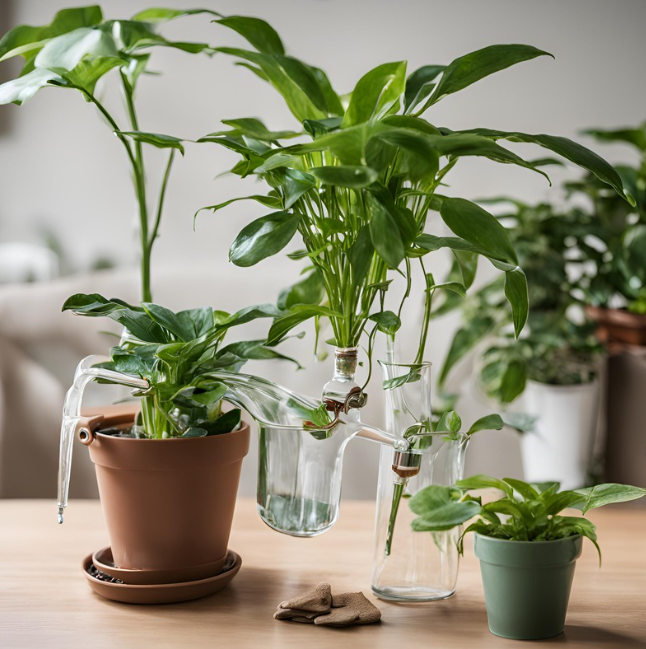
Strategy 7: Provide Environmental Protection
- Mulching: Discuss how mulching can help regulate soil temperature, retain moisture, and suppress weeds, benefiting plant health.
- Shade Cloth and Row Covers: Explain how shade cloth and row covers can protect plants from extreme temperatures, frost, or sunburn.
- Windbreaks and Microclimates: Provide tips for creating windbreaks and optimizing microclimates to shield plants from harsh environmental conditions.
Alright, let’s talk about creating a safe and comfortable environment for your plants to thrive in. It’s like setting up a cozy retreat where they can relax and grow to their fullest potential. Here’s how to do it:
Mulching: Picture a cozy blanket of mulch spread around the base of your plants, protecting their roots from extreme temperatures and retaining moisture in the soil. It’s like giving your plants a warm hug, keeping them snug and happy all year round.
Shade Cloth and Row Covers: Now, let’s talk about giving your plants some shade on those scorching hot days. Shade cloth and row covers can provide relief from the sun’s intense rays, preventing sunburn and heat stress. It’s like setting up a shady umbrella for your plants to lounge under.
Windbreaks and Microclimates: Finally, let’s talk about creating sheltered spots in your garden where plants can escape the brunt of harsh winds and extreme weather. Planting windbreaks like hedges or installing fences can create microclimates that offer protection from the elements. It’s like finding a cozy nook where your plants can hunker down and weather the storm.
By providing environmental protection for your plants, you’re ensuring they have the best possible chance to thrive and flourish. It’s like creating a little oasis in your garden where plants can grow happy and healthy, no matter what Mother Nature throws their way!
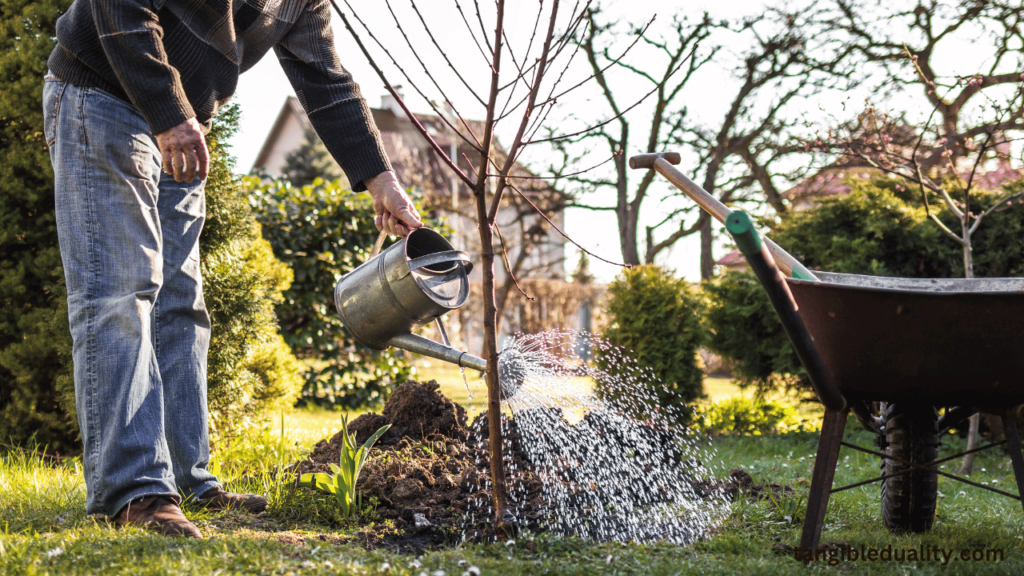
Strategy 8: Practice Good Garden Hygiene
- Sanitation: Emphasize the importance of removing plant debris, fallen leaves, and weeds to minimize pest and disease problems.
- Pruning and Thinning: Discuss the benefits of regular pruning and thinning to improve air circulation and reduce pest habitat.
- Crop Rotation: Introduce the concept of crop rotation as a method to prevent the buildup of pests and diseases in the soil.
Alright, it’s time to roll up our sleeves and give our garden a little spring cleaning. Think of it like tidying up your room – a little bit of effort goes a long way in keeping things neat and organized. Here’s what you need to do:
Sanitation: Imagine clearing away all the clutter and debris from your garden beds – fallen leaves, dead plants, and weeds have got to go. Not only does this tidy-up session make your garden look nicer, but it also helps prevent pests and diseases from taking hold. It’s like decluttering your garden to create a clean and healthy space for your plants to thrive.
Pruning and Thinning: Now, let’s talk about giving your plants a little trim. Regular pruning helps improve airflow and light penetration, reducing the risk of diseases like powdery mildew and fungal infections. Plus, it keeps your plants looking tidy and well-groomed. It’s like giving your plants a spa day – a little trim here, a little snip there, and they’ll come out looking fresh and rejuvenated.
Crop Rotation: Finally, let’s talk about mixing things up in the garden. Crop rotation is like giving your plants a change of scenery – moving them to a different spot in the garden each year helps break the cycle of pests and diseases that can build up in the soil. Plus, it helps replenish nutrients and maintain soil health. It’s like giving your garden a new lease on life every season.
By practicing good garden hygiene, you’re creating a clean and healthy environment where your plants can thrive. It’s like giving them the VIP treatment they deserve – a little TLC goes a long way in keeping your garden happy and flourishing!
Conclusion
- Summary of Strategies: Recap the eight expert strategies for protecting plants in the garden.
- Encouragement: Encourage readers to apply these strategies to their own gardens and experiment with different methods.
- Closing Statement: Reinforce the importance of proactive plant protection practices in creating healthy, resilient, and beautiful gardens.

